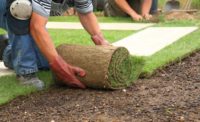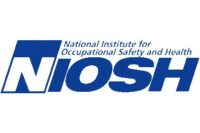With a fatality rate of 25.1 per 100,000 workers compared to 3.8 for all industries, the landscaping industry’s dangers are obvious – even more so when the numbers are broken down by tasks: landscaping/groundskeeping workers (10.1 per 100,000 workers), pesticide handlers (15.4) and tree trimmer/pruners (an astounding 179.9).
With summer – and its inevitable upsurge in landscaping activity – up ahead, NIOSH'S National Occupational Research Agenda (NORA) chose to focus on the health and safety of landscape professionals at its first meeting of 2017. (The purpose of NORA’s sector and cross sector councils is to exchange information, form partnerships, and enhance dissemination and implementation of prevention tools.)
According to a NIOSH Science Blog post by Cheryl F Estill, PhD, PE; Michael Foley, MA; Teresa Schnorr, PhD, and Bryan Beamer PhD, PE, CSP, the meeting included presentations that provided a wealth of information about landscaping safety:
CA FACE
Robert Harrison and Laura Styles of the California Department of Health presented some fatality assessments. California’s drought, and the recent deluge of rain, has caused tree and landscaping work to be more frequently performed ontributing to 26 tree trimmers dying on the job in California between 2012-2015. The California Fatality Assessment and Control Evaluation (CA/FACE) program investigates worker deaths and produces written educational materials and short safety videos (digital stories) highlighting best practices for worker safety and health. CA/FACE has investigated 16 fatalities among workers in the landscaping industry including falls, electrocutions, suffocation, drownings, and incidents involving machinery (wood chippers and chainsaws). One video tells the story of Roberto, a tree trimmer who died tragically in June 2012 when palm fronds fell on him and he suffocated. The video has received almost 125,000 YouTube views nationally and has raised tree trimming hazard awareness. CA/FACE not only collaborates with employers, workers, and trade associations in the tree care industry but also provides these stakeholders with materials for use in safety training and improvement of work practices. The video “Preventing Palm Tree Trimmer Fatalities” can be seen on YouTube in English and Spanish
NJ FACE
Daniel Lefkowitz of New Jersey Department of Health (NJDOH) presented on fatal injuries among tree trimmers in New Jersey. Between 1990 and 2015, there have been 92 work-related fatal injuries in the New Jersey tree-care industry. The NJDOH Fatal Occupational Injuries Surveillance Project tracks work-related fatal injuries across the state and targets high-risk industries including tree-care. Of the 92 fatalities, the five leading types were struck-by (n=22), falls (n=20), transportation-related (n=15), machine-related (n=15), and electrocutions (7). NJDOH has investigated several fatalities in this industry, and has published two hazard alerts, one on wood chipping machines, and one on tree-care hazards, which are available in English and Spanish.
In addition to the daily hazards faced by tree workers, this worker population faces additional hazards when responding to natural disasters and often function as first responders as they clear roads and provide access for other emergency personnel. After Superstorm Sandy made landfall in New Jersey, it was estimated that more than 40,000 trees had to be trimmed or removed while restoring power. NJDOH conducted three focus groups to characterize exposures, personal protective equipment (PPE), and illness and injury during and after the storm. Of the 32 participants, 63% indicated that job tasks differed during storm-related work. Some of these tasks included: working on down trees on houses and cars; dealing with uprooted trees under tension; working around low or downed wires; and conducting storm clean-up on downed trees that were subject to complex/unpredictable forces.
In New Jersey, legislation known as the Tree Expert and Tree Care Operators Licensing Act (NJ Public Law, Chapter 237, §45:15C; 11-31) was passed, and the Rules are currently being established. The Act creates the titles “Licensed Tree Expert” and “Licensed Tree Care Operator,” and requires at least one person in each company that performs tree-care services to be licensed. The Act also requires New Jersey businesses performing tree-care work to register with the NJ Department of Environmental Protection, and to document worksite training. For more information about the Act, please go to: njtreeexperts.org.
National Association of Landscape Professionals
Sam Steel, the Safety Adviser for the National Association of Landscape Professionals (NALP) presented on the ‘Tools and Resources for Planning, Implementing and Evaluating Safety and Health Programs in the Landscape and Lawn Care Industry, ’ which highlighted many efforts of NALP members to combat workplace hazards. NALP’s Safe Company Program developed in 2016 includes a customizable electronic version in English and Spanish. Among other things, it provides an electronic copy of the “Safety Tailgate Training Manual," multiple annual safety webinars, and safety adviser services. He noted that the 2017 Landscape Industry Occupational Safety and Health Administration (OSHA) Alliance Certified 10-hour Program will address industry risk factors and exposure controls, will conform with OSHA standards and safe work methods, and will emphasize PPE, machine guarding, slips, trips and falls, and other relevant health hazards. Dr. Steel suggested that monitoring, information sharing and training on occupational noise exposure, new equipment and machinery operations, and cultural diversity would be potential areas for further research.
Summary/Suggestions for Research
During the January 2017 the NORA Service Sector Council webinar, participants suggested that existing worker safety and health materials could be utilized throughout the landscaping industry. They indicated that the California FACE program videos are an example of a method for successfully reaching a wide audience and then disseminating to small businesses. Additionally, the training could be disseminated to companies in other services subsectors such as education, restaurants, hotels, as well as other industry sectors such as manufacturing and health care that either do their own in-house landscaping or contract out to small landscaping companies. Investigations into the elevated transportation incident injuries were also encouraged. Other suggestions included enforcing existing standards, evaluating the effectiveness of the New Jersey arborist law and encouraging other states to pass similar laws. It was recognized that the industry must work to overcome language barriers and cultural differences. Additional complications such as the difficulty of reaching temporary and contingent workers and considering the health and safety of volunteers, common in some service sectors were mentioned as areas of concern.
Click here to read the blog post and leave a comment or suggestion for NORA/NIOSH.



